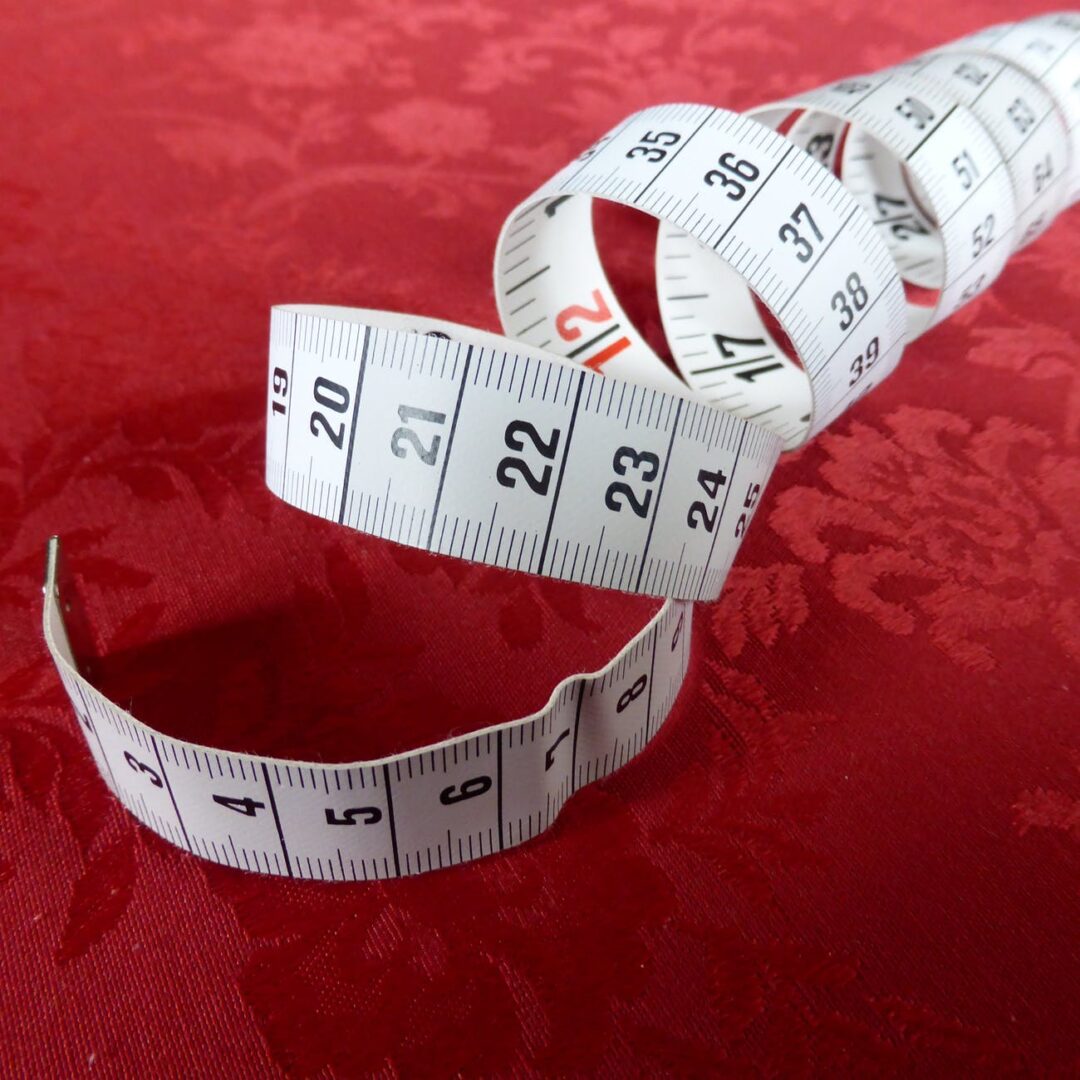The quality of a suit is heavily influenced by its material, style, and the way that it is tailored (the extent to which it is truly fitted to the individual).
Related to that last element, let’s look at a few terms used to describe different approaches — particularly definitions of bespoke and made-to-measure (MTM).
- Other suit descriptors: ready-to-wear, off-the-rack, and custom
- 5 distinctions between bespoke & made-to-measure
- Evolution of suit creation
- Ambiguity & lack of law
- Getting the right fit

Other suit descriptors: ready-to-wear, off-the-rack, and custom
Before we get into detail related to bespoke and made-to-measure suits, let’s look at three other ways that suits are described or categorized:
Ready-to-wear (RTW) – The designer comes up with cuts and styles for suits, offering ready-to-wear suits directly off the rack. “The development of the RTW suit was pioneered in the 1950s, when manufacturers segmented the male form into different sizes for mass production,” notes British tailoring blog Permanent Style. While this method is used for most of the suits available today, no effort is made to directly fit a certain individual.
Off-the-rack – This term is synonymous with ready-to-wear.
Custom – This category is essentially the opposite of the ready-to-wear or off-the-rack suit. It is modified to suit the wearer. This term is a relatively broad descriptor though, inclusive of both made-to-measure garments and bespoke suits. It refers to the ability to change anything to meet your style or measurement needs.

5 distinctions between bespoke & made-to-measure
Now that we have a broader sense of terms that are used to describe suits, let’s look at bespoke vs. made-to-measure tailoring from five different angles:
1. Pattern-making
Made-to-measure (MTM) – The suit shop takes a size 44 jacket’s patterns and adjusts them if you are not within allowable measurements. That means the master tailor is able to change aspects, such as shoulder width and jacket length, so that the finished product better conforms to your body. A very basic way to determine quality within the MTM category is to look at the number of measurements they collect (hopefully more than a handful).
Bespoke – Instead of using standardized patterns, tailors use a fresh pattern each time for bespoke tailoring. This method allows them not to overlook details and to treat each wearer as truly unique. The alignment of the body comes into play, along with extensive measurements.
2. Fittings
Made-to-measure (MTM) – You get a fitting at the outset of this process. There is a second fitting when the finished suit is prepared. There are no fittings during the making of the suit. However, you can generally make adjustments if a measurement is off or you otherwise want a modification.
Bespoke – Various fittings take place while the suit is being made. These fittings make the method more complicated, but they also greatly enhance the quality. These mid-fittings include the skeleton baste fitting, forward fitting, and fin bar fin fitting. These fittings are essentially revisions on the original draft. Skilled tailors will keep improving and arrive at a much higher degree of precision.

3. Fabric
Made-to-measure (MTM) – You will typically be able to choose selected fabrics from one or two mills; so essentially, there are two different sources of that element. Using just one or two suppliers impacts the options available, in terms of the fabrics, cost, and quality.
Bespoke – Generally, a customer of a bespoke shop will have access to the offerings of ten mills or more.
4. Customization options
Made-to-measure (MTM) – There will be a defined list of design characteristics that you will be able to adjust. These will generally include cuffs, number of buttons, pant pleats, pocket options, and vent style. You might see the ability to change other features, such as button-stance, gorge height, interior lining, or lapel width.
Bespoke – There is no finite list of options. The suit can be modified, no matter how complex your request.
5. Tailor face-time
Made-to-measure (MTM) – A sales associate will take your measurements and pass their findings to the lead cutter, production manager, or master tailor. The person who takes your measurements will not necessarily have a lot of training.
Bespoke – You will meet with the tailor themselves.

Ambiguity & lack of law
These concepts and practices are taken very seriously by tailors and other suit professionals. However, because there is ambiguity, some manufacturers have wanted the use of tailoring language to be protected by law.
In France, haute couture is legally protected, with guidelines for its use by business.
In the United Kingdom, some companies have tried to get bespoke defined within the law; however, the Advertising Standards Authority did not accept their proposal.
In other words, there are no laws for these words, just accepted industry standards and an understanding of the suit shops that are most concerned with acting in your best interests.
Getting the right fit
Do you want a suit that is both masterful and individualized? At Alan David Custom, the fit of our custom garments and custom suits are our number one priority and is what sets us apart from the rest of the pack. Book an appointment.
About the Author: Alan Horowitz
Alan Horowitz is the owner of Alan David Custom. Having grown up in the custom tailoring business, Alan values taking care of his clients and always going above and beyond to ensure 100% satisfaction. Alan David Custom has become the best custom tailor in New York City. Alan is a 4th generation tailor with an expertise in measuring and pattern making.


